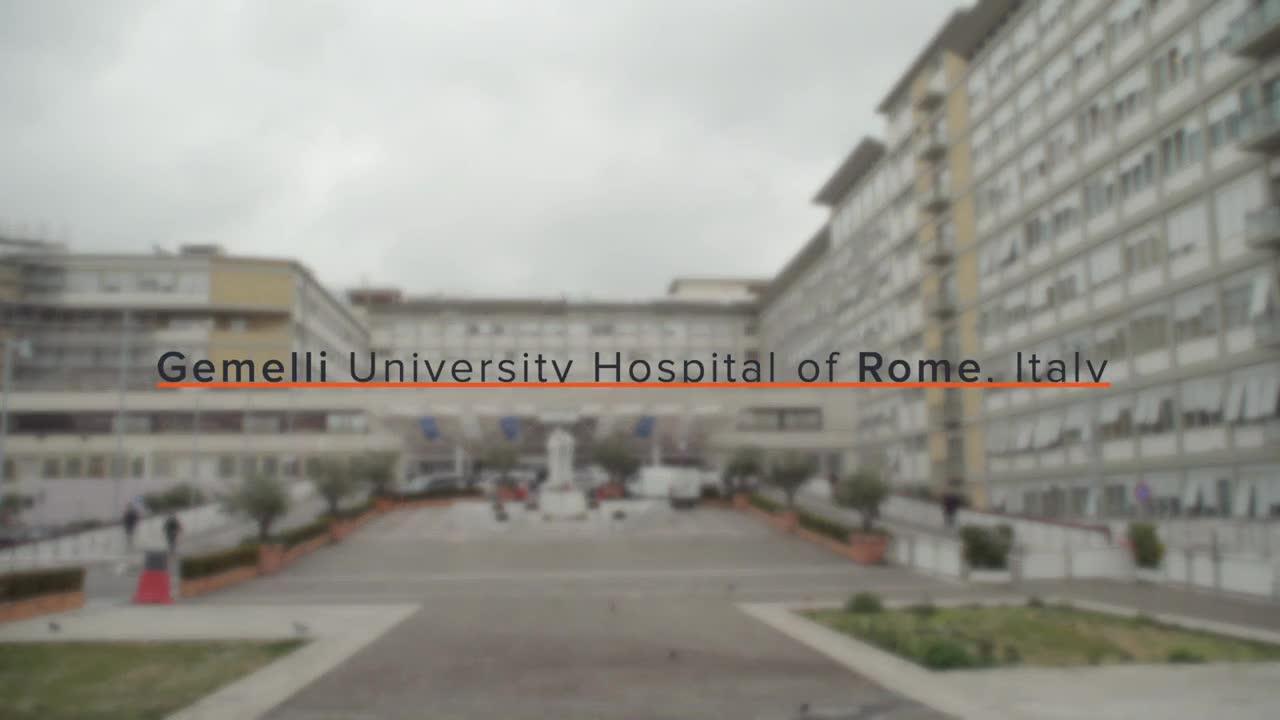
Brachytherapy treatment from a Radiographer's perspective
Healthcare Perspective
Patrizia Cornacchione
The view of Patrizia Cornacchione, a medical radiographer at Fondazione Policlinico Universitario “Agostino Gemelli” IRCCS in Rome.
I'm Patrizia Cornacchione, and I'm a medical radiographer.
Having the proper equipment and so using high-performing applicators for the treatment also gives us the possibility of carrying out the procedures promptly and faster, and more efficiently for the patient as well. Obviously, using these instruments properly and managing them within the right timescale often also gives us the opportunity to improve the delivery of treatment, and, therefore, consequently also to gain in terms of positive patients feedback, because they can manage and approach the treatment with the feeling of getting it done more quickly as well.

What is brachytherapy?
As a radiographer, I have had the privilege of being involved in the administration of brachytherapy treatment, and I must say it is an incredibly fascinating and impactful procedure. Brachytherapy involves the precise placement of radiation sources directly within or near the tumor, allowing for highly targeted treatment while minimizing damage to surrounding healthy tissues. From my perspective, this treatment modality offers several notable advantages.
Firstly, brachytherapy allows for a higher radiation dose to be delivered directly to the tumor, resulting in enhanced tumor control and potentially higher cure rates. The ability to deliver radiation internally gives us greater control over the radiation dose distribution, enabling us to tailor the treatment specifically to each patient's unique anatomy and tumor characteristics.
Another advantage of brachytherapy is its potential to reduce treatment time. Unlike external beam radiation therapy, where treatment sessions are spread over several weeks, brachytherapy often involves shorter treatment durations. Sometimes, a single treatment session may be sufficient to deliver the required radiation dose. This not only offers convenience for the patient but also reduces the overall treatment time, allowing them to resume their daily activities sooner.
Moreover, brachytherapy often leads to fewer side effects compared to other treatment modalities. By precisely targeting the tumor, we can spare nearby healthy tissues, resulting in reduced radiation exposure to critical structures and consequently minimizing potential complications. This targeted approach contributes to improved patient outcomes and enhances their overall quality of life during and after treatment.
From a technical standpoint, administering brachytherapy requires specialized skills and expertise. As a radiographer, I work closely with the radiation oncologists and medical physicist to ensure the accurate placement of the radiation sources and optimal delivery of the prescribed dose. We utilize imaging techniques such as ultrasound, CT, or MRI to guide the placement of the applicators or radioactive sources, ensuring precise positioning within the tumor or target area.
In summary, brachytherapy is an exceptional treatment option that offers numerous benefits from a radiographer's perspective. Its ability to deliver targeted radiation directly to the tumor, reduce treatment time, and minimize side effects makes it a highly effective and patient-friendly modality. As a radiographer, I am proud to contribute to the successful implementation of brachytherapy, knowing that it plays a significant role in improving patient outcomes and positively impacting their lives.
The role of a radiographer in brachytherapy
Radiographers play a crucial role in the brachytherapy treatment process, working closely with the radiation oncologist, medical physicist, and other members of the healthcare team. Their responsibilities encompass several key aspects, ensuring the safe and accurate delivery of brachytherapy treatment. Here are some of the essential roles and responsibilities of radiographers in brachytherapy:
- Treatment Planning: Radiographers are involved in the treatment planning phase of brachytherapy. They work alongside the radiation oncologist and medical physicist to review imaging scans, such as CT, MRI, or ultrasound, to determine the optimal placement of applicators or radioactive sources. They assist in contouring the target area and nearby critical structures to guide the treatment process effectively.
- Applicator Placement: Radiographers are responsible for accurately placing the brachytherapy applicators in the patient's body. They ensure that the applicators are correctly positioned within or near the tumor, based on the treatment plan. This may involve using imaging techniques to guide the insertion process and verify the correct placement of the applicators.
- Radiation Safety: Ensuring radiation safety is a paramount responsibility of radiographers in brachytherapy. They strictly adhere to radiation protection protocols, such as wearing appropriate personal protective equipment (PPE) and following proper handling procedures for radioactive sources or materials. Radiographers also monitor radiation exposure levels to ensure they are within acceptable limits for both patients and themselves.
- Imaging Guidance: Radiographers often provide real-time imaging guidance during brachytherapy procedures. This may involve performing imaging scans, such as ultrasound or fluoroscopy, to visualize the position of the applicators and verify their placement accuracy. Real-time imaging helps ensure that the treatment targets the intended area and allows for adjustments if necessary.
- Treatment Delivery: Radiographers are responsible for operating the brachytherapy equipment during treatment delivery. They control the radiation source or machine, ensuring the accurate and precise delivery of the prescribed radiation dose. Radiographers closely monitor the treatment process, verifying the correct functioning of the equipment and taking necessary precautions to maintain patient safety.
- Patient Care and Communication: Radiographers play a vital role in providing care and support to patients undergoing brachytherapy. They educate patients about the procedure, answer their questions, and address any concerns they may have. Radiographers ensure that patients are comfortable and well-informed throughout the treatment process, fostering a supportive and reassuring environment.
- Documentation and Quality Assurance: Radiographers maintain accurate and comprehensive documentation of the brachytherapy procedures, including treatment plans, imaging scans, and treatment delivery parameters. They contribute to quality assurance activities, participating in equipment checks, calibration procedures, and ensuring compliance with regulatory guidelines and standards.
In summary, radiographers are instrumental in the successful implementation of brachytherapy treatment. Their roles encompass treatment planning, applicator placement, radiation safety, imaging guidance, treatment delivery, patient care, documentation, and quality assurance. By working closely with the multidisciplinary team, radiographers ensure the safe, accurate, and effective delivery of brachytherapy treatment, ultimately contributing to the well-being and outcomes of patients.
